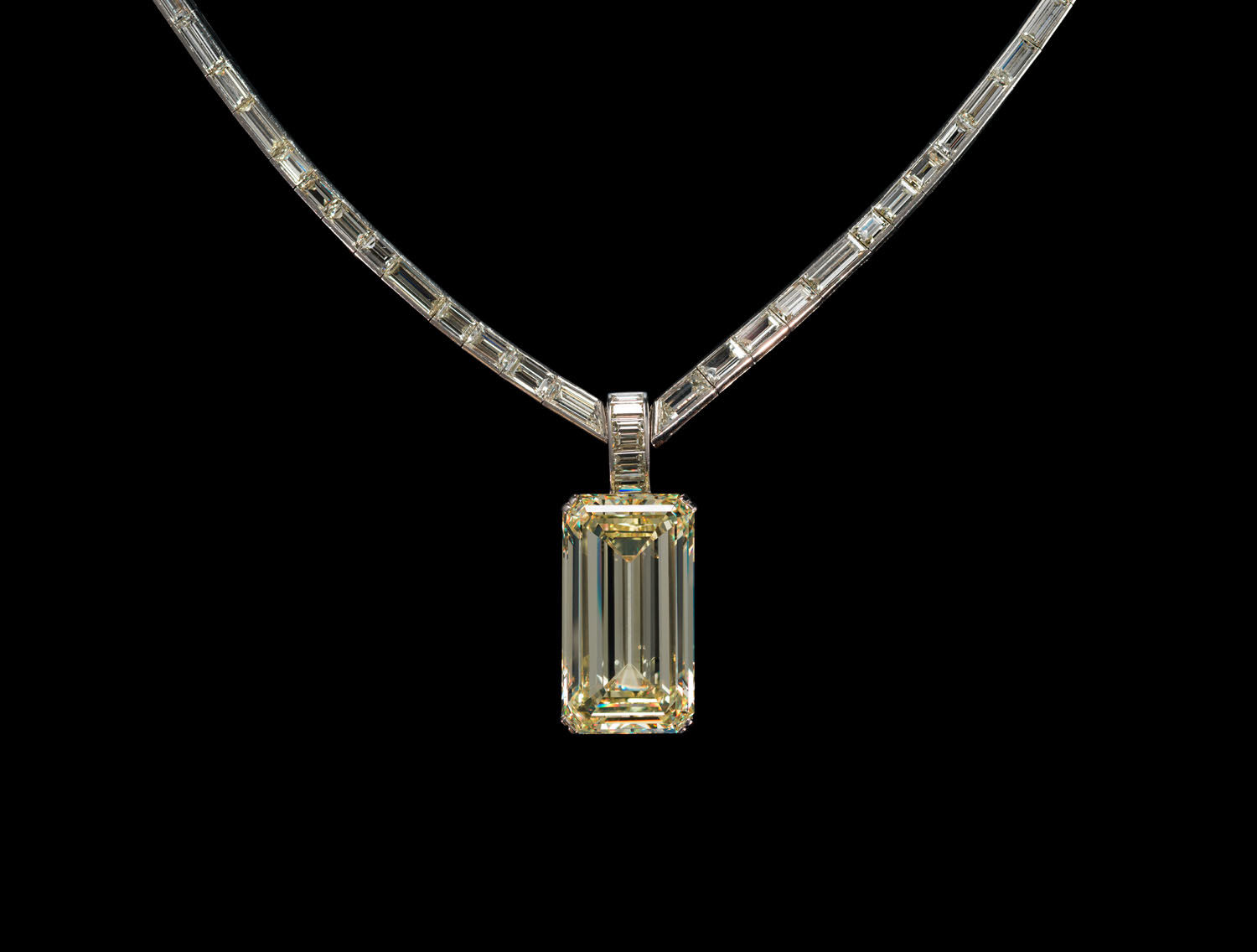Diamond Prices
Read moreThe Kimberley Diamond
Miracle Legacy of South Africa
The town of Kimberley is one of the cornerstones of diamond mining history in South Africa. The discovery of the impressive Kimberley diamond was brought on by the discovery of the Eureka Diamond, which in turn, started the Diamond Rush in the nation and turned its economy around. There are many sites where people dug around in hopes of finding a precious diamond. The mines and the beautiful gemstones they produced are world-famous. Some of the most famous diamonds that came from them include The Premier Rose, The Cullinan, The Taylor-Burton, and many more.
If you’d like to learn more about the Kimberley Diamond, in this article you will find:

- Discovered in
- 1964
- Country of Origin
- South Africa
- Mine of Origin
- Dutoitspan Mine, Kimberley Region
- Carat Weight
- 616 carats
- Cut Shape
- Naturally formed octahedral diamond crystal
- Clarity
- Natural state, possibly flawless or internally flawless
- Color
- Yellow
- Previous Owners
- De Beers Consolidated Mines Ltd
- Current Owner
- South African people
- Estimated Value
- Not applicable (preserved for historical and educational purposes)
The Origins of the Kimberley Diamond
The Kimberley Diamond was discovered in 1964 in the Dutoitspan Mine in the Kimberley Region. It carries the name of the town where it was found. Kimberley is an extremely important historical site for the development of South Africa. The town is also where the first diamond in the country was discovered. People were already expecting great things from the mines in South Africa.
The Kimberley Diamond is the largest octahedral diamond
Upon the unearthing of the Kimberley Diamond, everyone was mesmerized. They had found a 616-carat naturally formed octahedral diamond crystal. It was the seventh-largest gem-quality rough diamond ever discovered in 1964. Today it is the 14th largest gem-quality rough diamond ever discovered. In comparison, the largest gem-quality rough diamond ever discovered is The Cullinan at an impressive 3,106 carats. The Cullinan was also found in South Africa. The Kimberley diamond was (and still is), however, the largest naturally formed octahedral diamond crystal in the world.
Legends of Kimberley – one of the global capitals of diamond mining
The city of Kimberley was the unofficial capital of the Diamond World for many years. The rich reserves of precious gemstones earned it its title. The mines were so fruitful that there were some legends of how the diamonds came to be in Kimberley. One of them says that a spirit came down from Heaven with a huge basket full of diamonds. The spirit pitied the humans – the land had gone through so many difficulties. The celestial being flew over the Vaal River and continued on a path to the city of Kimberley. It slowly dropped diamonds along the way, evenly spreading them out. Once it reached Kimberley, the spirit’s foot got stuck in a camelthorn tree branch. The celestial creature lost its balance and dropped its basket full of diamonds in Kimberley. According to the legend, this is how the Kimberley Mines were formed.
Another legend states that the Griquas enjoyed the site of the Kimberley Mines for hunting. Since the place was covered in camelthorn trees, this attracted a lot of game such as mountain lions. However, the Griquas remember that after rain, a strange mist would rise up from the ground and cover everything. This led people to believe that the place was haunted. Nowadays, of course, we know that the mist was sulphuric fumes.
The Cutting of the Kimberley Diamond
The diamond is on display in its natural uncut form of 616 carats. The owners of De Beers Consolidated Mines Ltd knew that the chances of finding a naturally formed octahedral diamond crystal of this size again were slim to none. They decided to preserve it for future generations.
The Modern Ownership History of the Kimberley Diamond
The Kimberley Diamond remained in South Africa after its discovery. It was such a unique find that De Beers decided to keep it as something to be looked at and learned from. They did not attempt to sell the diamond or even look into cutting it. It has remained the property of the South African people. It can be seen on display in the “Diamond Vault” of the visitors center of the “Kimberley Big Hole” together with the Eureka Diamond.
The Technical Characteristics of the Kimberley Diamond
The Kimberley Diamond is still in its natural state. The diamond has retained its rough form and therefore can only be described in terms of its shape, color, and weight. It is a naturally formed octahedral diamond crystal. It is yellow and it weighs 616 carats.
The Significance of the Kimberley Diamond
The mines of South Africa
The Kimberley Diamond comes from a long line of breath-taking precious gemstones found in South Africa. The discovery of the Eureka Diamond changed the world view of the country. The economy flourished, due to the new companies being set up, many diamond industry specialists and enthusiasts coming in. Many well-respected industry titans started mines in South Africa. One such example is De Beers and their Premier Mines, which unearthed The Taylor-Burton Diamond, The Cullinan, and many other spectacular gems. Their South African mines eventually became the most productive in the world. Nowadays, South Africa is one of the few reliable places for finding pink and blue diamonds.
The Big Hole
The Kimberley Mine, also known as The Big Hole, is an open-pit underground mine in the city of Kimberley. It is most likely the deepest hole excavated by hand in the world! The Big Hole has a surface of 42 acres and is 1,519 ft wide. It was excavated to a depth of 790 ft. However, subsequently, it got partially infilled with debris reducing its depth to about 705 ft. Since then it has accumulated about 130 ft of water, leaving 574 ft of the hole visible.
The Big Hole was very important in the diamond mining business and it helped important discoveries within the industry. The mine was also a big contributor to the city of Kimberley’s economy. Enthusiasts have been trying to get the Big Hole registered as a World Heritage Site since the early 2000s. The site welcomes visitors. There are many activities to do at the Big Hole including viewing the Kimberley Diamond in The Big Hole Diamond Vault.
The innovation of the Kimberley Mines
The Kimberley mines had most of their work done underground. Even the Big Hole which was an open site eventually moved all of its operations underground as it became too dangerous for them to continue in the open. De Beers soon became the world leader in diamond mining. This meant being the first not just in simply finding and excavating precious gemstone, it also meant developing new and better ways to do so. Some of these included sorting and mechanical digging methods. The Kimberley Mines were also responsible for the creation of deep underground mining techniques. Nowadays, the diamond mining industry methods have improved, of course, but at the basis, the methods developed in the Kimberley mines are still used.
The fair trade innovation of the Kimberley Mines
The Kimberley mines are responsible for the invention of The Kimberley Process Certification Scheme. It is a global diamond certification system that ensures the fair trade of gemstones. The scheme requires any global trade of diamonds to have a government-issued certificate. Any business failing to acquire this is considered illegal. The system, unfortunately, has some flaws. It heavily relies on stable governments and state-led border controls which are not always present in poorer countries. Some organizations have also pointed out that this does not ensure the traded diamonds are not ‘blood diamonds’. The Kimberley Process Certification Scheme, however, is a step in the right direction for the industry. Combined with other laws and necessary precautions, it can make the diamond industry feel safer for everyone involved.
The discovery of kimberlites
Geologists who studied the Kimberley Mines made an amazing discovery. The mines were rich with diamonds but scientists were unsure as to how that happened. Before the study on the Kimberley Mines was conducted, it was assumed that diamonds could only be found in river basins and rivers. It was a mystery how the precious gemstones appeared in the river basins. The geologists who participated in this study found that the diamond deposits in the mines were actually ancient volcanic pipes. These pipes brought the gems from below the earth’s crust where they were formed up to the surface where they are found. In honor of the place of this amazing discovery, these pipes are called kimberlites. Since then, kimberlites have been named the most important source of primary diamonds.
We hope you enjoyed the read!
If you’d like to read about other famous diamonds like the Orlov, Eureka, or Premier Rose diamonds, you can visit Ajediam’s Famous Diamonds glossary. Or, if you’re feeling inspired, you can browse Ajediam’s premium diamond collections shop.



